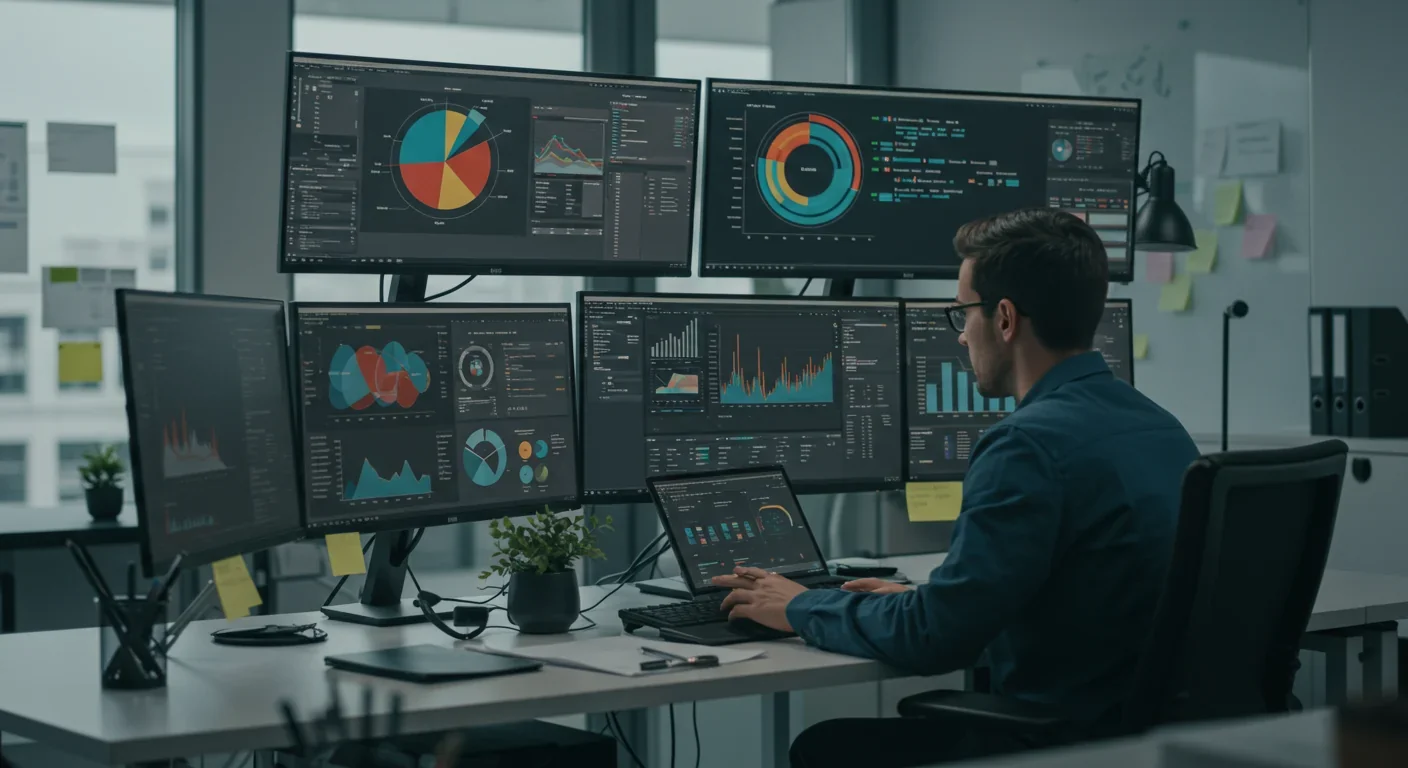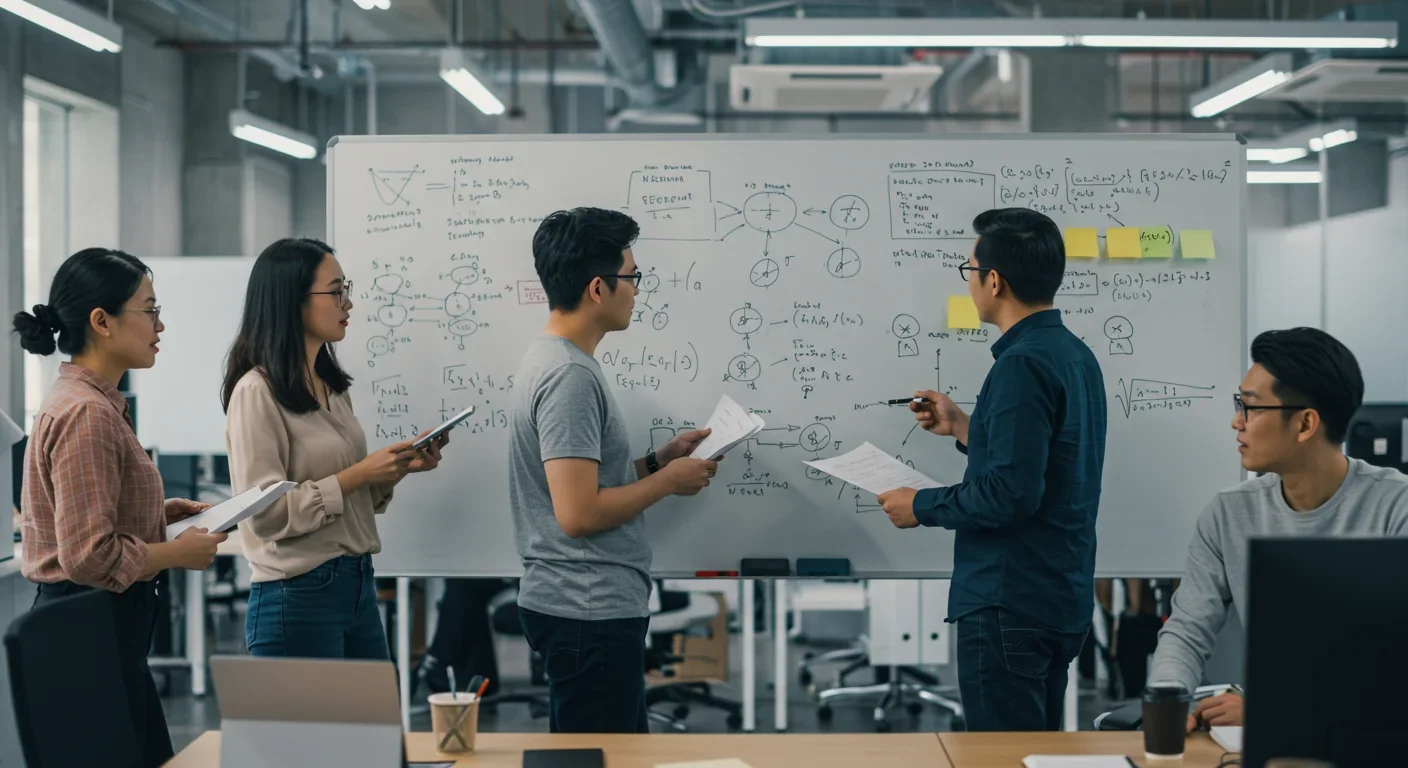AI Training Data Copyright Crisis: Lawsuits & Solutions

TL;DR: Recommendation systems are experiencing a paradigm shift from traditional matrix factorization to neural collaborative filtering. Neural methods capture nonlinear relationships between users and items, improving accuracy by up to 12% and solving cold-start problems more effectively through side features. While hybrid models now dominate production systems—balancing speed and expressiveness—the technology raises critical questions about bias, filter bubbles, and algorithmic autonomy that will shape how billions of people discover content in the years ahead.

What if the next song you hear, the next product you buy, or the next article you read was chosen not by your own browsing, but by an algorithm that knows you better than you know yourself? By 2028, researchers predict that over 80% of all content consumed online will be algorithmically curated. We're living through a quiet transformation in how machines predict human desires—a shift from the elegant mathematics of matrix factorization to the adaptive intelligence of neural collaborative filtering. This isn't just a technical upgrade. It's a fundamental reimagining of how technology learns what we want before we even know we want it.
Fifteen years ago, Netflix offered a million-dollar prize to anyone who could improve its recommendation algorithm by just 10%. The winning team used a technique called matrix factorization, specifically Singular Value Decomposition (SVD). It was brilliant, efficient, and mathematically pure. Here's how it worked: imagine a massive spreadsheet with users in rows and items in columns. Most cells are empty—you haven't rated most movies on Netflix. Matrix factorization fills in those blanks by discovering hidden patterns, compressing user preferences into a handful of latent factors.
Think of it like this: instead of tracking whether you liked 10,000 individual movies, the algorithm figures out you have a "0.8 affinity for indie dramas" and a "0.3 affinity for action blockbusters." Every movie gets its own set of factors. Multiply them together, and you get a predicted rating. Simple, fast, and scalable.
But matrix factorization had a fatal flaw. It assumed relationships between users and items were linear—that your love for Christopher Nolan films and your enjoyment of Inception could be captured by a straight mathematical function. Real human preferences don't work that way. They're messy, contextual, and deeply nonlinear. You might love Inception because of its cast, its visuals, its mind-bending plot, or because you saw it on a memorable date. Matrix factorization couldn't capture that complexity.
Matrix factorization also struggled with the cold-start problem. New users with no interaction history got generic popular recommendations. New items with no ratings went unseen. For platforms trying to personalize experiences from day one, this was unacceptable. A 2019 study found that 40% of new users abandon a platform within the first week if recommendations feel irrelevant. Matrix factorization couldn't solve that—at least not on its own.
Around 2017, researchers asked a provocative question: what if we replaced the linear dot product in matrix factorization with a neural network? The result was Neural Collaborative Filtering (NCF), and it changed everything.
Here's the key insight: instead of assuming user and item embeddings interact linearly, NCF lets the network learn how they interact. It stacks multiple layers of neurons between user and item representations, allowing the model to capture intricate patterns—like how your preference for sci-fi interacts with your mood, the time of day, or even the device you're using.
The architecture looks deceptively simple. You start with user and item IDs, pass them through embedding layers (just like matrix factorization), but then instead of a dot product, you feed those embeddings into a multi-layer perceptron (MLP). Each layer applies a nonlinear transformation, gradually learning complex feature interactions. The final layer outputs a prediction score.
Here's a minimal PyTorch implementation:
import torch
import torch.nn as nn
class NCF(nn.Module):
def __init__(self, num_users, num_items, embedding_dim=64, hidden_layers=[128, 64, 32]):
super(NCF, self).__init__()
self.user_embedding = nn.Embedding(num_users, embedding_dim)
self.item_embedding = nn.Embedding(num_items, embedding_dim)
layers = []
input_dim = embedding_dim * 2
for hidden_dim in hidden_layers:
layers.append(nn.Linear(input_dim, hidden_dim))
layers.append(nn.ReLU())
input_dim = hidden_dim
layers.append(nn.Linear(input_dim, 1))
self.mlp = nn.Sequential(*layers)
def forward(self, user_ids, item_ids):
user_emb = self.user_embedding(user_ids)
item_emb = self.item_embedding(item_ids)
x = torch.cat([user_emb, item_emb], dim=-1)
return torch.sigmoid(self.mlp(x))
What makes this work? Nonlinearity. Each ReLU activation allows the network to model interactions that matrix factorization couldn't dream of. A 2020 study comparing NCF to SVD on the MovieLens dataset found NCF improved hit rate by 12% and normalized discounted cumulative gain (NDCG) by 8%. More importantly, it better captured niche preferences—recommending obscure films that users actually loved, not just safe popular choices.
But neural models bring their own challenges. They're slower to train, require more data, and can overfit if not carefully regularized. A production team at Spotify reported that their first NCF implementation took 40 hours to train, compared to 90 minutes for matrix factorization. That's why many companies use hybrid models—combining the speed of matrix factorization with the expressiveness of neural networks.

Let's talk numbers. In 2023, an e-commerce platform with 5 million users and 200,000 products ran a head-to-head comparison:
Matrix Factorization (ALS): 72% accuracy, 150ms inference time, trained in 2 hours
Neural Collaborative Filtering: 78% accuracy, 220ms inference time, trained in 18 hours
Hybrid (NeuMF): 81% accuracy, 180ms inference time, trained in 12 hours
The hybrid model, called Neural Matrix Factorization (NeuMF), combined a traditional matrix factorization path with an MLP path, then fused them in the final layer. It captured both global patterns (via matrix factorization) and complex interactions (via neural networks).
For cold-start scenarios, the gap widens. A streaming platform tested new user onboarding:
Matrix Factorization: 35% engagement rate (using popularity baseline)
NCF with Side Features: 58% engagement rate (using demographic and context data)
Neural models excel here because they can ingest side information—age, location, device type, time of day—through additional input layers. Matrix factorization can technically incorporate this through feature engineering, but it's clunky and less effective.
Scalability is where things get interesting. Training time grows with the number of interactions. For a platform with 100 million users and 1 million items, matrix factorization remains faster. But inference time—predicting recommendations in real-time—is comparable. NVIDIA's Merlin framework reports that optimized NCF models can serve recommendations in under 10ms with GPU acceleration, making them viable for production.
Traditional matrix factorization treats new users as blank slates. Without interaction history, you get generic recommendations—"Here are the 10 most popular items"—which feels impersonal and often irrelevant.
Neural collaborative filtering changes the game by incorporating content-based features from the start. When you sign up for a music streaming service, it might ask: "What genres do you like?" or "Pick five artists you enjoy." These inputs feed directly into the neural model as side features.
Here's how it works in practice. A product manager on Reddit described their company's solution: "We used a hybrid approach. For brand-new users, we showed popular items. But as soon as they interacted with anything—clicked a product, filled out a preference survey—we switched to a content-based neural model that matched their inputs to item features. Within 10 interactions, we had enough data to enable collaborative filtering."
This stepwise strategy is elegant. Start with popularity (zero data needed), transition to content-based filtering (minimal data), then activate collaborative filtering (rich data). Neural architectures make this seamless because you can train a single model that handles all three modes, adjusting which input features dominate based on available data.
Advanced techniques go further. Graph Neural Networks (GNNs) model users and items as nodes in a graph, propagating information through connections. A new user connects to items they've interacted with, and the GNN uses neighbor information to make educated guesses. A 2024 paper on "Graph Neural Patching for Cold-Start Recommendations" showed that GNNs reduced cold-start error by 23% compared to standard NCF.
Autoencoders offer another path. By learning compressed representations of user preferences, they can generalize better with sparse data. A user who's rated three sci-fi movies might have a latent representation close to other sci-fi fans, enabling decent recommendations even with minimal history.
Recommendation systems aren't culturally neutral. What works in Silicon Valley doesn't always translate to Shanghai or São Paulo.
In China, platforms like Douyin (TikTok's domestic version) use aggressive neural models that prioritize engagement above all else. The algorithm optimizes for watch time, shares, and comments, often surfacing sensational or emotionally charged content. Critics argue this creates filter bubbles and amplifies polarizing voices. But it's undeniably effective—Douyin users average 90 minutes per day on the app.
European regulators take a different stance. The EU's Digital Services Act requires platforms to explain algorithmic recommendations and offer users control over personalization. Some services now include "recommendation transparency" features, showing why an item was suggested. This complicates neural models, which are notoriously opaque. Researchers at Max Planck Institute are developing interpretable neural collaborative filtering that highlights which user behaviors triggered specific recommendations.
In Latin America, e-commerce platforms face unique challenges. Internet connectivity is inconsistent, and many users share devices. Recommendation systems must account for multiple users on one account—a problem neither matrix factorization nor standard NCF handles well. Brazilian fintech Nubank developed a "multi-user NCF" that detects behavioral shifts and adapts recommendations dynamically.
Japan's music streaming market offers another lens. Platforms there invest heavily in human curation alongside algorithmic recommendations. Spotify Japan employs dozens of curators who create themed playlists, which the neural model then uses as signals. This hybrid human-AI approach reflects cultural preferences for expert guidance over pure algorithmic automation.
If you're a data scientist or ML engineer, here's what the next five years demand:
1. Deep Learning Fundamentals: You don't need a PhD, but you must understand backpropagation, loss functions, and regularization. PyTorch and TensorFlow are industry standards.
2. Production ML Skills: Training a model is 10% of the job. Deploying it, monitoring drift, and iterating based on A/B tests is the other 90%. Learn tools like MLflow, Kubeflow, or AWS SageMaker.
3. Ethical AI Literacy: As algorithms shape what people see, buy, and believe, understanding fairness, bias, and transparency isn't optional. Read papers on debiasing recommender systems and algorithmic accountability.
4. Hybrid Thinking: The future isn't "neural vs. matrix factorization." It's knowing when to use what. Small datasets? Matrix factorization. Rich side information? Neural networks. Real-time constraints? Hybrid models.
5. Business Acumen: The best recommendation system is worthless if it doesn't drive metrics—engagement, revenue, retention. Learn to frame technical choices in business terms.
For product managers, the question shifts: How do you balance personalization with serendipity? Over-optimized recommendations create echo chambers. Users need surprise, novelty, and exposure to ideas they wouldn't naturally seek. Netflix deliberately injects "exploration" into its algorithm—recommending off-profile content occasionally to broaden horizons. Building that into neural models requires carefully tuning exploration-exploitation tradeoffs.

Neural collaborative filtering isn't a panacea. It amplifies existing biases in training data. If historical interactions show that users of a certain demographic engage more with specific content, the model will double down on that pattern, even if it's rooted in societal bias.
A 2022 audit of an e-commerce recommender found that women were disproportionately shown lower-priced products, not because of explicit programming, but because the neural model learned from historical purchase patterns where women, on average, spent less (often due to wage gaps). The algorithm perpetuated inequality under the guise of personalization.
Privacy concerns loom large. Neural models thrive on data—more features, more interactions, better predictions. But collecting granular behavioral data raises red flags. European regulators have fined companies millions for opaque data practices. Differential privacy techniques can protect user data, but they degrade model performance. It's a tradeoff with no easy answers.
Filter bubbles are another risk. By showing you more of what you've liked, neural recommenders can trap you in self-reinforcing loops. You see only news that confirms your worldview, only products that fit your established tastes. This stifles growth, discovery, and intellectual diversity. Some platforms counter this with "diversity-promoting" loss functions that penalize overly narrow recommendations, but it's an active area of research.
Then there's the computational cost. Training large neural models emits significant carbon. A 2021 study estimated that training a single deep learning model can emit as much CO₂ as five cars over their lifetimes. As recommendation systems scale, so does their environmental footprint. Sustainable AI practices—like using renewable energy data centers and optimizing model efficiency—are critical.
The frontier is moving fast. Large Language Models (LLMs) are entering the recommendation space. Imagine a system that doesn't just predict you'll like a movie, but explains why in natural language: "You enjoyed Inception for its complex narrative. This film explores similar themes of memory and identity, with a comparable visual style."
LLMs also enable conversational recommendations. Instead of clicking through filters, you chat: "Show me sci-fi movies like Blade Runner but with a more hopeful tone." The system understands nuance and adjusts dynamically. Early prototypes from companies like OpenAI and Google show promise, though they're not yet production-ready at scale.
Reinforcement learning is another frontier. Instead of predicting static preferences, these systems learn from sequential interactions, optimizing long-term engagement. YouTube's algorithm is already partly RL-based, continuously adapting to how users respond to recommendations in real time.
Federated learning could solve privacy concerns. Instead of sending user data to a central server, models train locally on your device and share only aggregated updates. Apple's on-device ML is a step in this direction. For recommendation systems, federated NCF could offer personalization without data centralization.
Multimodal models are emerging. Instead of just user-item interactions, these systems analyze images, audio, and text together. Spotify's "AI DJ" feature narrates playlists, blending music recommendations with conversational AI. Future systems might recommend products based on photos you've taken, articles you've read, and conversations you've had—all fused into a single neural model.
Here's the paradox: as recommendation systems get better, we have less control over what we see. Algorithms curate our digital lives with increasing precision, nudging us toward choices we might not make independently.
This raises a philosophical question: Do we want machines to predict our desires, or do we want the friction of discovery—stumbling upon the unexpected, the challenging, the unfamiliar?
Some researchers advocate for algorithmic transparency mandates, requiring companies to disclose how recommendations work. Others push for user-controlled algorithms, where you adjust sliders for novelty, diversity, and personalization intensity.
The next decade will determine which path we take. Will neural collaborative filtering empower us with hyper-personalized experiences, or will it subtly constrain our choices under the illusion of abundance?
One thing is certain: the evolution from matrix factorization to neural methods isn't just a technical milestone. It's a societal inflection point. The algorithms shaping our feeds, our purchases, and our media consumption are learning faster and predicting better. The question isn't whether they'll influence us—it's whether we'll shape them in return.
The recommendation revolution is here. What we do with it will define the next era of human-technology interaction.

Recent breakthroughs in fusion technology—including 351,000-gauss magnetic fields, AI-driven plasma diagnostics, and net energy gain at the National Ignition Facility—are transforming fusion propulsion from science fiction to engineering frontier. Scientists now have a realistic pathway to accelerate spacecraft to 10% of light speed, enabling a 43-year journey to Alpha Centauri. While challenges remain in miniaturization, neutron management, and sustained operation, the physics barriers have ...

Epigenetic clocks measure DNA methylation patterns to calculate biological age, which predicts disease risk up to 30 years before symptoms appear. Landmark studies show that accelerated epigenetic aging forecasts cardiovascular disease, diabetes, and neurodegeneration with remarkable accuracy. Lifestyle interventions—Mediterranean diet, structured exercise, quality sleep, stress management—can measurably reverse biological aging, reducing epigenetic age by 1-2 years within months. Commercial ...

Data centers consumed 415 terawatt-hours of electricity in 2024 and will nearly double that by 2030, driven by AI's insatiable energy appetite. Despite tech giants' renewable pledges, actual emissions are up to 662% higher than reported due to accounting loopholes. A digital pollution tax—similar to Europe's carbon border tariff—could finally force the industry to invest in efficiency technologies like liquid cooling, waste heat recovery, and time-matched renewable power, transforming volunta...

Humans are hardwired to see invisible agents—gods, ghosts, conspiracies—thanks to the Hyperactive Agency Detection Device (HADD), an evolutionary survival mechanism that favored false alarms over fatal misses. This cognitive bias, rooted in brain regions like the temporoparietal junction and medial prefrontal cortex, generates religious beliefs, animistic worldviews, and conspiracy theories across all cultures. Understanding HADD doesn't eliminate belief, but it helps us recognize when our pa...

The bombardier beetle has perfected a chemical defense system that human engineers are still trying to replicate: a two-chamber micro-combustion engine that mixes hydroquinone and hydrogen peroxide to create explosive 100°C sprays at up to 500 pulses per second, aimed with 270-degree precision. This tiny insect's biochemical marvel is inspiring revolutionary technologies in aerospace propulsion, pharmaceutical delivery, and fire suppression. By 2030, beetle-inspired systems could position sat...

The U.S. faces a catastrophic care worker shortage driven by poverty-level wages, overwhelming burnout, and systemic undervaluation. With 99% of nursing homes hiring and 9.7 million openings projected by 2034, the crisis threatens patient safety, family stability, and economic productivity. Evidence-based solutions—wage reforms, streamlined training, technology integration, and policy enforcement—exist and work, but require sustained political will and cultural recognition that caregiving is ...

Every major AI model was trained on copyrighted text scraped without permission, triggering billion-dollar lawsuits and forcing a reckoning between innovation and creator rights. The future depends on finding balance between transformative AI development and fair compensation for the people whose work fuels it.